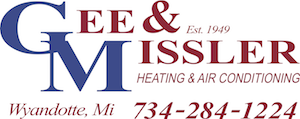
We spend a good majority of our time inside. In reality, the Environmental Protection Agency (EPA) has estimated being within a building comprises 90% of our schedule. Although, the EPA also has found your indoor air can be three to five times more polluted than outdoors.
That’s due to the fact our residences are firmly sealed to boost energy efficiency. While this is good for your heating and cooling expenses, it’s not so fantastic if you’re among the 40% of the population with respiratory allergies.
When outdoors ventilation is insufficient, pollutants including dust and volatile organic compounds (VOCs) may get stuck. As a result, these pollutants may aggravate your allergies.
You can boost your indoor air quality with clean air and regular housework and vacuuming. But if you’re still having issues with symptoms when you’re at home, an air purifier may be able to help.
While it can’t remove pollutants that have settled on your furnishings or carpeting, it can help freshen the air circulating around your home.
And air purification has also been scientifically proven to help reduce some allergic symptoms, according to the American College of Allergy, Asthma and Immunology. It might also be helpful if you or a family member has lung issues, such as emphysema or COPD.
There are two options, a portable air purifier or a whole-home air purifier. We’ll go over the advantages so you can figure out what’s right for your house.
Whole-House Air Purifier vs. Portable Air Purifiers
A portable air purifier is for a single room. A whole-house air purifier works with your home comfort system to treat your entire home. Some kinds can clean by themselves when your HVAC equipment isn’t on.
What’s the Best Air Purifier for Allergies?
Go after a model with a High Efficiency Particulate Air (HEPA) filter. HEPA filters are installed in hospitals and offer the most comprehensive filtration you can find, as they trap 99.97% of particles in the air.
HEPA filters are even more beneficial when installed with an ultraviolet (UV) germicidal light. This powerful combination can wipe out dust, dander, pollen and mold, all of which are general allergens. For the best in air purification, evaluate a system that also has a carbon-based filter to reduce household vapors.
Avoid using an air purifier that generates ozone, which is the primary component in smog. The EPA warns ozone might worsen respiratory problems, even when emitted at low settings.
The Allergy and Asthma Foundation of America has made a checklist of questions to think over when buying an air purifier.
- What can this purifier remove from the air? What doesn’t it take out?
- What’s its clean air delivery rate? (A higher number means air will be purified faster.)
- How regularly does the filter or UV bulb need to be switched]? Can I finish that without help?
- How much do new filters or bulbs cost?
How to Decrease Seasonal Allergy Symptoms
Want to have the {top|most excellent|best] performance from your new air purification equipment? The Mayo Clinic recommends doing other measures to decrease your exposure to seasonal allergy triggers.
- Stay in your home and keep windows and doors sealed when pollen counts are elevated.
- Have someone else cut the lawn or pull weeds, since these tasks can irritate symptoms. If you have to do these jobs alone, consider trying a pollen mask. You should also bathe right away and put on clean clothes once you’re done.
- Avoid stringing up laundry outside.
- Use your air conditioner while at your house or while in the car. Consider installing a high efficiency air filter in your house’s HVAC system.
- Equalize your house’s humidity levels with a whole-house dehumidifier.
- Hardwood, tile or linoleum are the suggested flooring types for reducing indoor allergens. If your house has carpet, use a HEPA filter on your vacuum cleaner.
Let Our Specialists Manage Your Indoor Air Quality Necessities
Ready to move forward with installing a whole-house air purifier? Give our professionals a call at 734-284-1224 or contact us online to get an appointment. We’ll help you find the best system for your home and budget.


